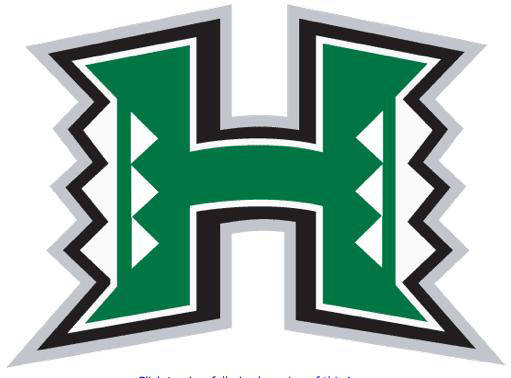Despite the “largesse” in making the University of Hawaii’s season-opening football game available sans subscription, fans shouldn’t expect to see pay-per-view disappear anytime soon. ADVERTISING Despite the “largesse” in making the University of Hawaii’s season-opening football game available sans subscription,
Despite the “largesse” in making the University of Hawaii’s season-opening football game available sans subscription, fans shouldn’t expect to see pay-per-view disappear anytime soon.
For all the initial celebration of cable subscribers saving money on the Aug. 26 UH-UMass game, and mainland fans receiving the resumption of out-of-market live streaming of the games, PPV is going to be with us on these shores for a while.
This marks the 16th season of PPV, and the current contract, signed by then-UH Manoa Chancellor Tom Apple in 2014, calls for at least two additional seasons, plus the opportunity to negotiate a five-year extension.
In comments this week, UH and its rights-holder, Spectrum (formerly Oceanic Time Warner), have indicated no plans to abandon the long-running business model.
“The university’s contract for the rights with Spectrum runs through (June 30, 2020),” athletic director David Matlin said. “At this time it is premature to speculate what arrangements future rights might be under. The landscape is changing dynamically and we will continue to monitor.”
For UH the attraction of PPV has been the up-front cash guarantee that is seven figures in the bank, rain or shine or the fortunes of the team. If all provisions of the contract are met, UH stands to receive at least $2,440,778 this season from Spectrum, plus bonuses if certain benchmarks are hit. The payout escalates to $2,539,386 for the final year of the current contract, plus any bonuses that are achieved.
PPV is the only money UH gets from having its football team on TV since it has not shared in the Mountain West Conference rights package. As a condition of membership and in order to retain its local TV money — which is better than that of its brethren — UH does not see a penny of conference rights fees pool until the payouts for the 11 other members each top $2.3 million.
Which will happen about the time Wyoming holds its first big board surf contest.
For UH, this year’s payout equates to roughly two sellouts, no small hunk of change for an athletic department struggling to achieve a balanced budget while going 60 consecutive regular-season home games without a sellout.
Of course, the questions that have hung over PPV since its inception are: How much impact has it had on the dwindling fan base and, for all the immediate cash, has UH paid a heavier price in the long term?
UH turnstile attendance has plummeted from 35,995 in 2001, the season preceding PPV, to 16,082 in 2015. Though, far and away the biggest part of that is attributable to the on-the-field record, which included five consecutive losing seasons from 2011 to 2015.
In addition, in any given season five or more UH games are available on ESPN, CBS Sports, the Pac-12 or other networks bundled in many cable packages.
While PPV has made UH football available for fans who can’t get to Aloha Stadium, it also has given those who might otherwise attend an option to stay away. Or, left out some of those unwilling or unable to ante up the PPV charge.
Speculation and, indeed, some anecdotal evidence, suggests that some younger fans who might have grown up watching UH football in pre-PPV days have been lost.
Before the current deal ends, the agreement calls for Spectrum to have a 90-day exclusive negotiating window. Only if Spectrum rejects UH does the school move on to other potential partners.
The UH-UMass game provides a glimpse of football without PPV but no promises for the future.



